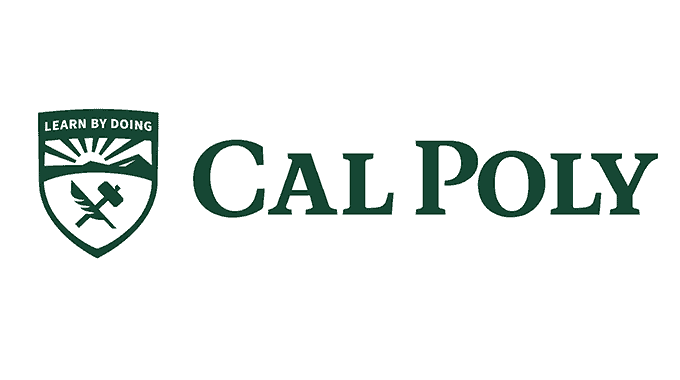Cal Poly recently received a grant of $340,374 from the National Science Foundation to purchase equipment that will help students and faculty better understand how buildings respond during earthquakes.
The grant will fund the purchase of a unit consisting of two actuators with higher force and displacement capacities than was previously possible in Cal Poly’s laboratories, along with the hardware and software for automated control of the system.
This dual-actuator system will be used to better understand the earthquake response of structures built and tested collaboratively by students and faculty members in the College of Architecture and Environmental Design (CAED) and College of Engineering (CENG).
The experimental results characterize structural performance and will allow students in the Architectural Engineering, Architecture and Construction Management departments, as well as students in the Civil and Environmental Engineering Department, to compare these results with predictions using theoretical models and computer simulations commonly used in industry.
The large-scale equipment will be in the CAED’s High-Bay Laboratory. There is also the possibility of a fee-for-service component for industry sponsored research.
After seeing the extensive physical effort students were putting into large-scale structural testing with the existing equipment in the High-Bay Laboratory, Anahid Behrouzi, a faculty member in the Architectural Engineering Department, took the lead on collaborating with colleagues and departments across campus to apply for the grant.

Photo by Rory de Sevilla.
“The new actuator system will significantly improve the caliber of experimental research that the students can carry out and the ease of performing it,” Behrouzi said. “We are trying to produce research-quality results that can be published in journals and provide guidance to practitioners on seismic design and retrofit. With this grant, we will have the modern equipment to enable efficient and precise loading control of our structural tests, which leads to greater data accuracy. The goal is to attract more industry-driven research projects to Cal Poly and expand student opportunities.”
Architectural Engineering Department Head Allen Estes added, “Students who participate in this research will clearly benefit. All other students will also benefit as the faculty plan to incorporate their research results into classroom instruction. The equipment will help the faculty stay current in their field and contribute to further professional development.
“The research we do enhances the research and reputation of the university and helps the broader profession while contributing to the body of knowledge,” Estes continued.
Charles Chadwell, chair of the Civil and Environmental Engineering Department, expressed his excitement for the increase in potential interdisciplinary collaboration between the CENG and CAED.
“The programs listed on the proposal all work in the built environment,” Chadwell said. “It’s where we all connect. Faculty in both civil engineering and architectural engineering have overlapping strengths in structural analysis and earthquake engineering. This particular area of study is where the structural engineering branch of civil engineering and architectural engineering greatly intersect.
“This collaborative equipment award is a great way to get us all talking and working together for the benefit of our respective departments, the university and Cal Poly students,” Chadwell continued.
In addition to Behrouzi and Chadwell, project team members include architectural engineering faculty Peter Laursen and John Lawson; architecture faculty Dale Clifford; and construction management faculty Andrew Kline and Jeong Woo. The proposal was submitted with the assistance of Andrew Brown in Cal Poly’s Division of Research and Economic Development.
About Cal Poly’s College of Architecture and Environmental Design (CAED)
With more than 2,000 students, Cal Poly’s acclaimed College of Architecture and Environmental Design (CAED) offers a unique blend of eight degree programs in five closely related departments: architectural engineering, architecture, city and regional planning, construction management, and landscape architecture. For close to three-quarters of a century, the CAED programs and 16,000 alumni have been a positive influence on the planning, design and construction worlds. More information is available at www.caed.calpoly.edu.
About Cal Poly’s College of Engineering (CENG)
Cal Poly’s College of Engineering is the best state-funded undergraduate engineering program in the nation, according to U.S. News & World Report, and its civil engineering program ranked No.1 among state-funded schools nationally. The largest college on the Cal Poly campus, offering 14 bachelor’s degree programs and 11 master’s programs, the college has over 80 state-of-the-art laboratories, more than 6,000 students and nearly 80 student clubs. More information is available at www.ceng.calpoly.edu.

